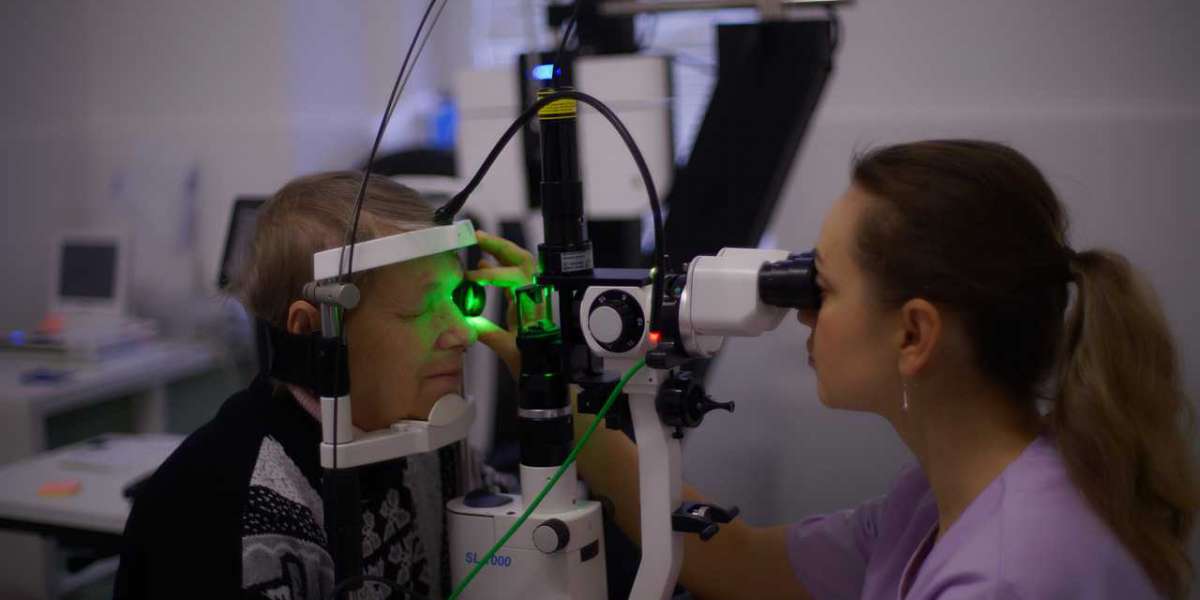Ophthalmologists use various techniques and tools to examine the eyes and diagnose eye conditions. These may include visual acuity tests, retinal examinations, tonometry (to measure intraocular pressure for glaucoma assessment), and advanced imaging technologies like optical coherence tomography (OCT) and fundus photography.
Based on their diagnosis, "https://alliedscripts.com/">ophthalmologists offer personalized treatment plans tailored to each patient's specific needs. Treatment options may range from prescription eyeglasses or contact lenses for refractive errors to medical therapies, laser procedures, or surgical interventions for more complex eye conditions.
Connective Tissue Disorders:
Connective tissue disorders (CTDs) are a group of medical conditions that affect the connective tissues in the body. Connective tissues are a diverse group of tissues that provide structural support, maintain the shape of organs, and facilitate communication between different body systems. They are found throughout the body and play a crucial role in maintaining the integrity and function of various organs and structures.
CTDs can affect people of all ages and may have a genetic or autoimmune basis. Some common connective tissue disorders include:
- Rheumatoid Arthritis (RA): RA is an autoimmune disorder that primarily affects the joints. It occurs when the immune system mistakenly attacks the synovium (the lining of the membranes that surround the joints), leading to joint inflammation, pain, and eventually joint damage.
- Systemic Lupus Erythematosus (SLE): SLE is a chronic autoimmune disorder that can affect multiple organs and tissues, including the skin, joints, kidneys, and nervous system. It is characterized by periods of flare-ups and remissions, and symptoms can vary widely among individuals.
- Scleroderma: Scleroderma is a group of rare autoimmune diseases that cause the skin and connective tissues to become hard and thick. In some cases, it can also affect internal organs, leading to complications.
- Ehlers-Danlos Syndrome (EDS): EDS is a group of inherited connective tissue disorders that affect the skin, joints, and blood vessels. Individuals with EDS may have hypermobile joints, fragile skin, and abnormal scarring.
- Marfan Syndrome: Marfan syndrome is a genetic disorder that affects the body's connective tissues, particularly in the cardiovascular system, eyes, and skeletal system. It can lead to long limbs, aortic aneurysms, and other complications.
- Osteogenesis Imperfecta (OI): OI, also known as brittle bone disease, is a genetic disorder that results in fragile bones that are prone to fractures.
- Polymyositis and Dermatomyositis: These are inflammatory myopathies that cause muscle weakness and inflammation in the muscles and skin, respectively.
Symptoms of connective tissue disorders can vary widely depending on the specific condition and the organs or tissues affected. Common symptoms may include joint pain, swelling, skin rashes, fatigue, and difficulty in movement.
The diagnosis of connective tissue disorders often involves a combination of clinical evaluation, blood tests, imaging studies, and sometimes biopsy of affected tissues. Treatment for CTDs aims to manage symptoms, prevent complications, and improve overall quality of life. This may involve medications to suppress the immune system, pain management, physical therapy, and lifestyle modifications.
Because connective tissues are found throughout the body, CTDs can have systemic effects and may require a multidisciplinary approach to treatment, involving rheumatologists, dermatologists, cardiologists, and other specialists, depending on the affected organs and systems.
Cornea:
The cornea is the transparent, dome-shaped outermost layer of the eye that covers the front part of the eyeball. It is the clear window through which light enters the eye and plays a crucial role in focusing light onto the retina, enabling clear vision. The cornea, along with the lens inside the eye, helps to refract (bend) light so that it converges on the retina, where images are formed and then sent to the brain via the optic nerve for processing.
Functionally, the cornea serves several important purposes:
Refractive Power:
The curvature and shape of the cornea contribute significantly to the eye's refractive power. It accounts for about two-thirds of the eye's total refractive power. Changes in the cornea's curvature can lead to refractive errors such as myopia (nearsightedness), hyperopia (farsightedness), and astigmatism.
Protection:
The cornea acts as a protective barrier, shielding the delicate structures inside the eye from external elements such as dust, debris, and microorganisms. It also helps filter out harmful ultraviolet (UV) rays from the sun.
Transparency:
The cornea's transparency is essential for allowing light to pass through and reach the retina. The lack of blood vessels in the cornea contributes to its clarity, ensuring that light is not scattered or absorbed, which would compromise vision.
Nourishment:
While the cornea lacks blood vessels, it receives nutrients and oxygen from tears and the aqueous humor (a clear fluid in the front of the eye) that bathe its outer surface.
The health and clarity of the cornea are essential for good vision. Various conditions can affect the cornea and lead to vision problems. Some common corneal conditions include:
- Corneal Abrasion: A scratch or injury to the cornea, often caused by foreign objects or contact lens misuse.
- Corneal Ulcer: An open sore or infection on the cornea, usually due to bacteria, viruses, or fungi.
- Keratoconus: A progressive thinning and bulging of the cornea, leading to irregular astigmatism and distorted vision.
- Corneal Dystrophy: A group of inherited conditions where abnormal deposits or changes in the corneal layers affect vision.
- Fuchs' Endothelial Dystrophy: A condition where the corneal endothelial cells degenerate, leading to corneal swelling and vision loss.
- Corneal Transplant: In cases of severe corneal damage or disease, a corneal transplant (keratoplasty) may be performed to replace the damaged cornea with a healthy donor cornea.
Ophthalmologists carefully assess the cornea's health during eye examinations using specialized instruments such as a slit lamp. Treatments for corneal conditions may include eye drops, medication, contact lenses, or surgical interventions, depending on the specific condition and its severity.
Dermatologic Disorders:
Dermatologic disorders, also known as skin disorders or skin conditions, refer to a broad range of medical conditions that affect the skin, hair, nails, and mucous membranes. These disorders can result from various factors, such as genetics, infections, allergies, immune system reactions, environmental exposures, or underlying systemic diseases. Dermatologic disorders can affect people of all ages and can present with a wide array of symptoms and severity levels.
Some common dermatologic disorders include:
- Acne: A common skin condition characterized by clogged pores, inflammation, and the formation of pimples, blackheads, or whiteheads.
- Eczema (Atopic Dermatitis): A chronic inflammatory skin condition characterized by dry, itchy, and red patches on the skin.
- Psoriasis: A chronic autoimmune disorder that leads to the rapid buildup of skin cells, resulting in thick, scaly, and often painful patches of skin.
- Rosacea: A chronic skin condition that causes redness and visible blood vessels on the face, often accompanied by bumps and pimples.
- Dermatitis: A general term for skin inflammation, which can be caused by irritants, allergies, or contact with specific substances.
- Hives (Urticaria): Raised, itchy welts on the skin that are usually caused by an allergic reaction.
- Vitiligo: A skin disorder characterized by the loss of skin pigmentation, leading to white patches on various parts of the body.
- Impetigo: A bacterial skin infection that commonly affects children, characterized by red sores that rupture and form yellow-brown crusts.
- Fungal Infections: Various fungal infections can affect the skin, such as athlete's foot (tinea pedis), ringworm (tinea corporis), and candidiasis (yeast infection).
- Warts: Small, rough growths caused by the human papillomavirus (HPV) that can appear on various parts of the body.
- Melanoma: A type of skin cancer that develops from melanocytes, the cells that produce skin pigment.
Diagnosis and management of dermatologic disorders involve careful clinical evaluation, often with the aid of dermoscopy (skin microscopy) and skin biopsies. Treatment options vary depending on the specific condition and its severity but may include "https://kahkaham.net/create-blog/">topical or oral medications, lifestyle modifications, phototherapy (light therapy), and surgical procedures.
Dermatologists are medical specialists who diagnose and treat dermatologic disorders. They play a crucial role in providing personalized care and developing treatment plans tailored to each patient's unique needs and circumstances.
Preventive measures, such as practicing sun protection, maintaining proper skincare routines, and avoiding exposure to potential allergens or irritants, can also help reduce the risk of developing certain dermatologic disorders and promote overall skin health.








